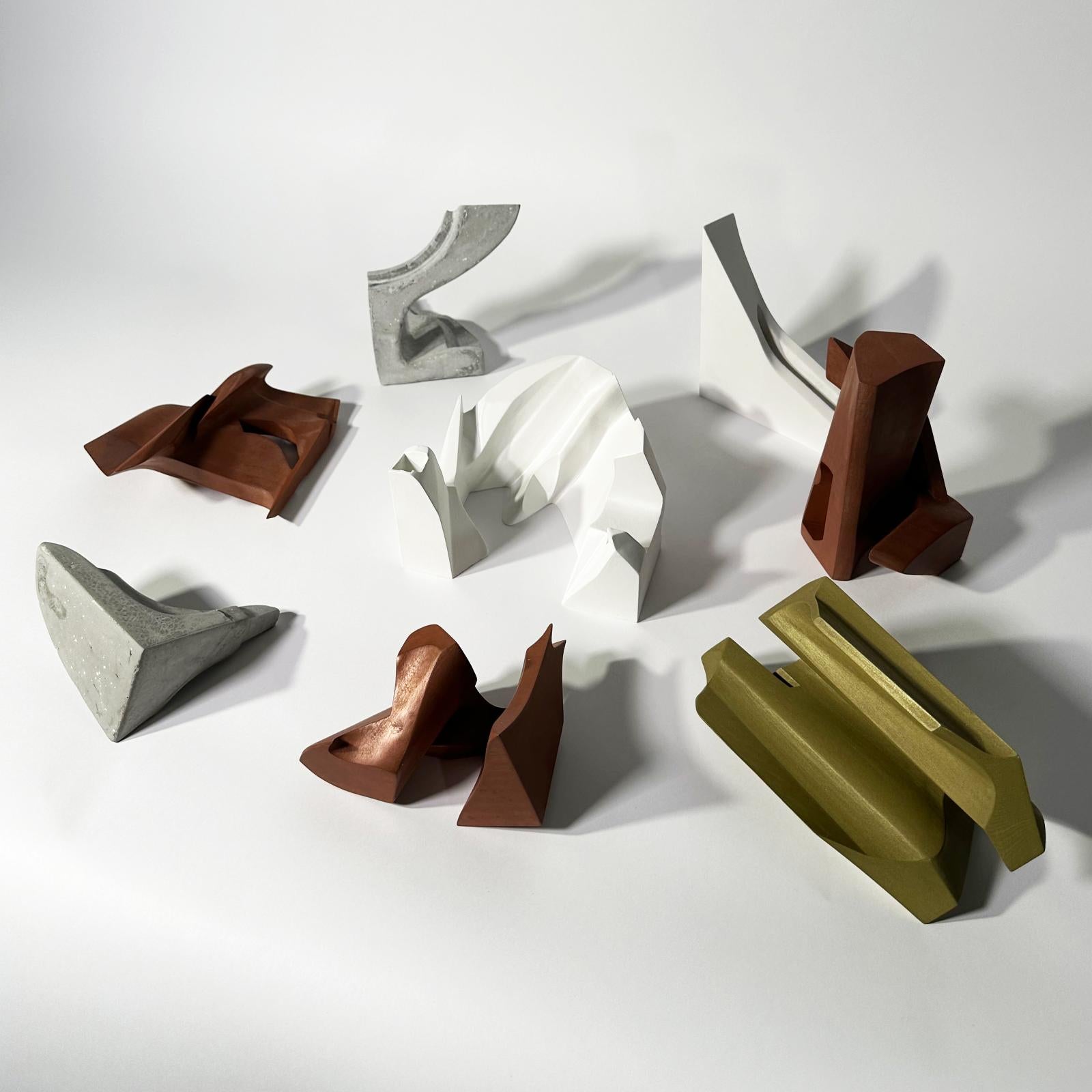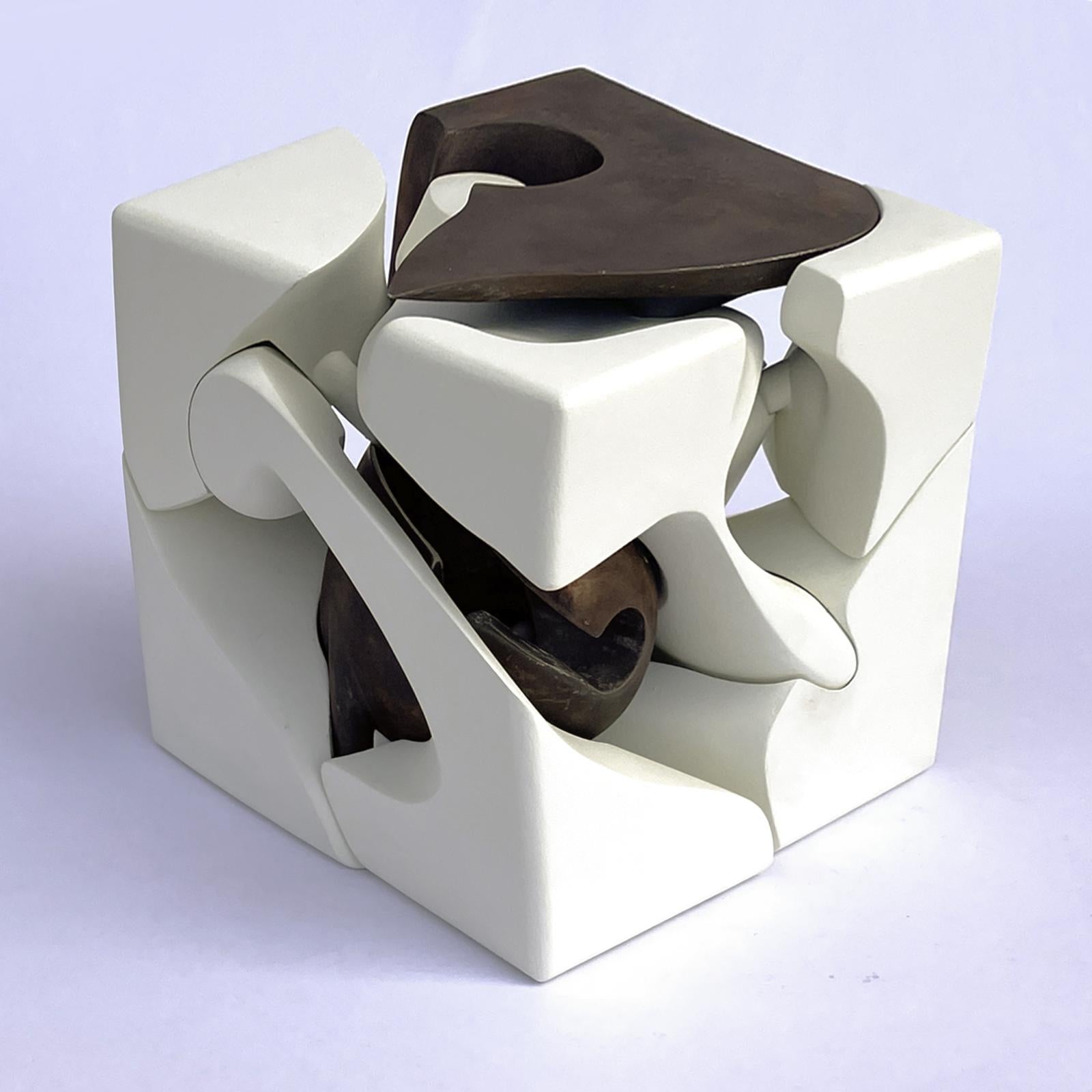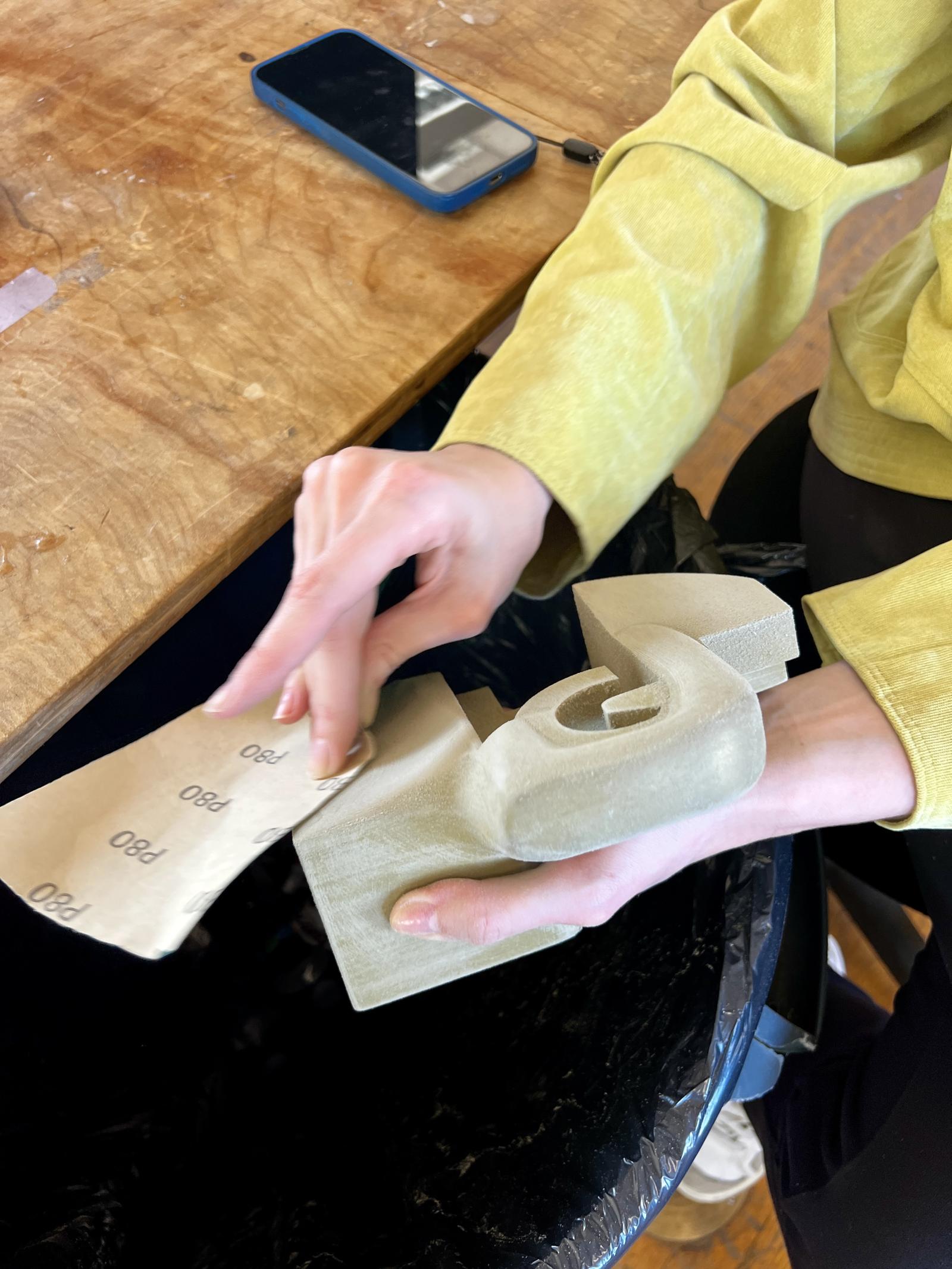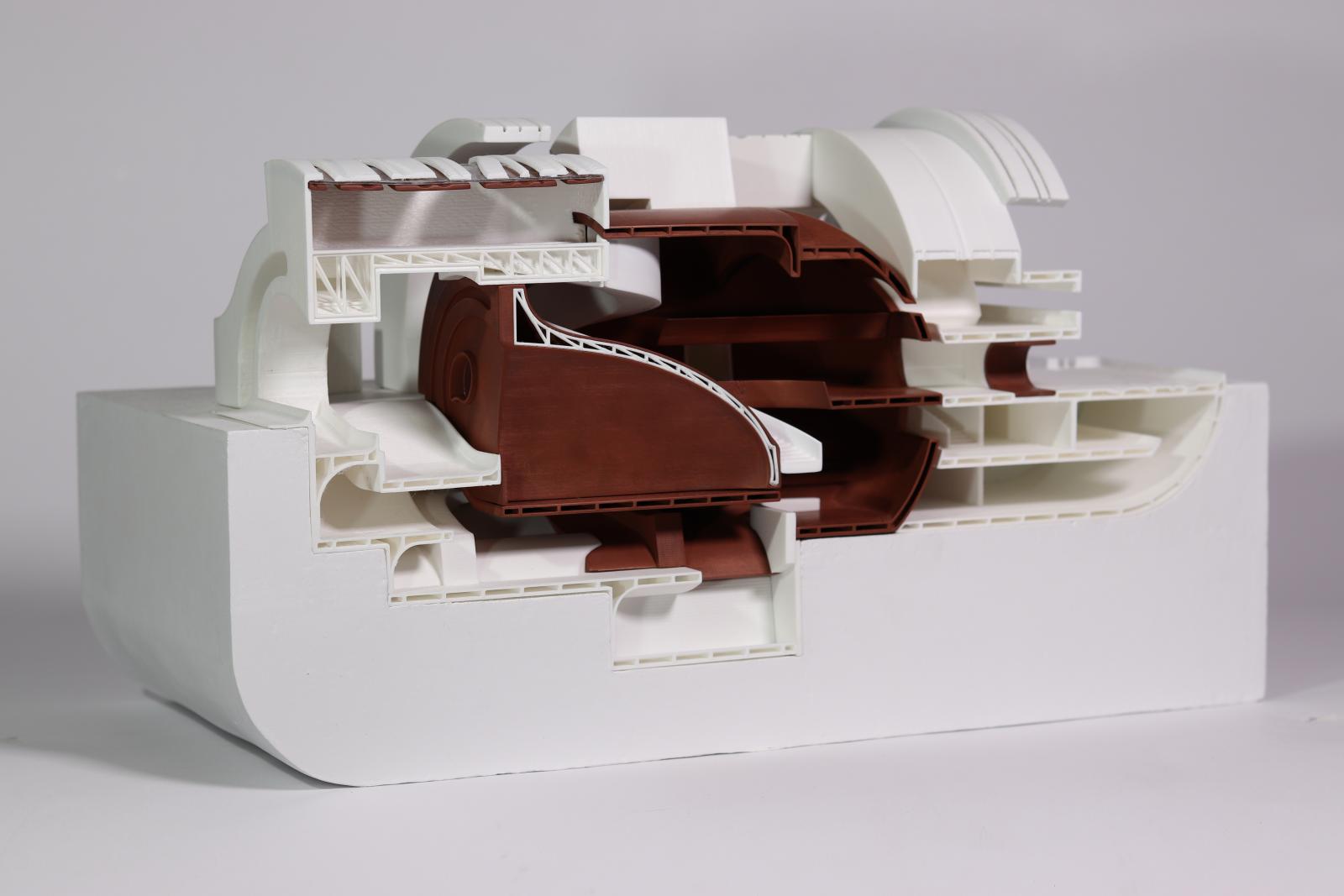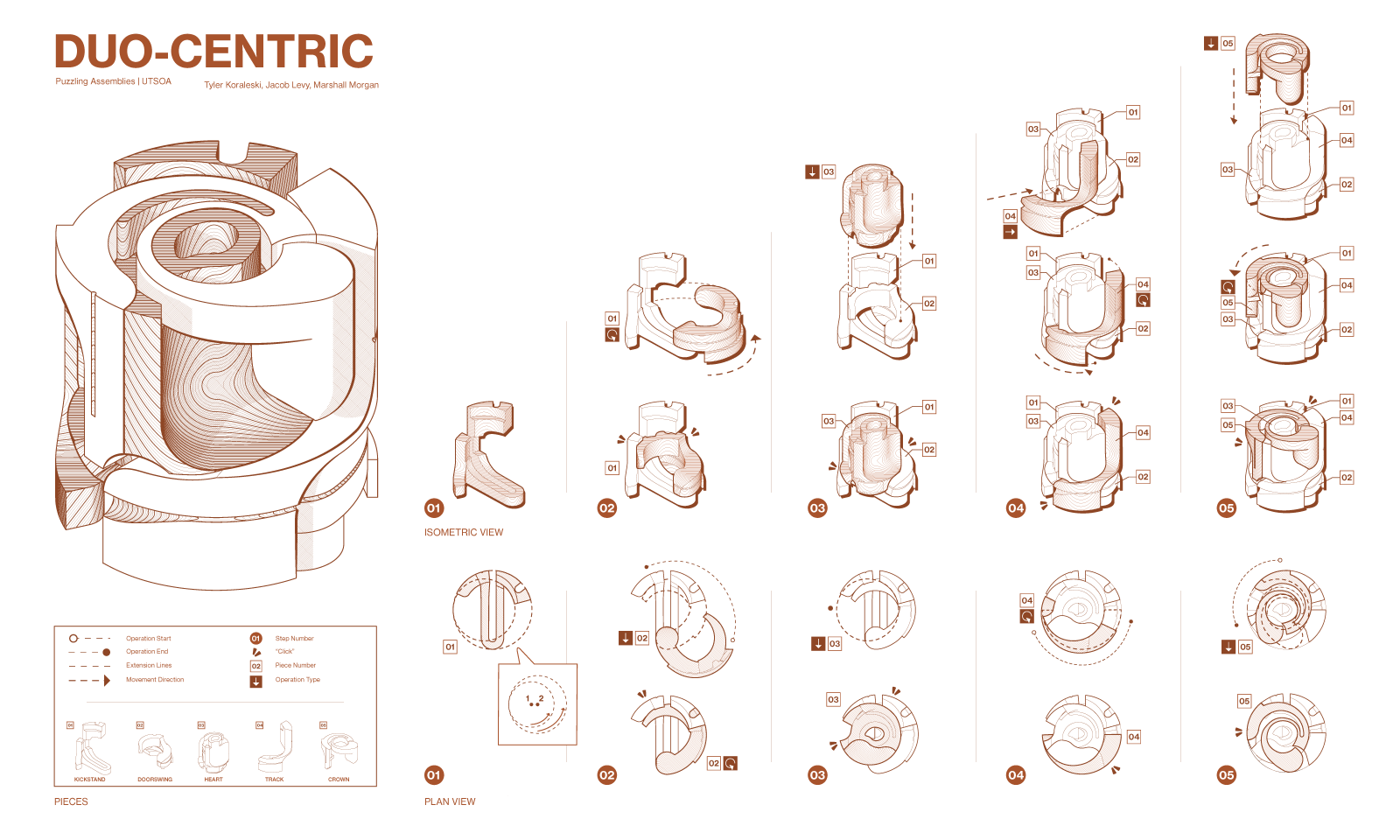Puzzling Forms of Assembly
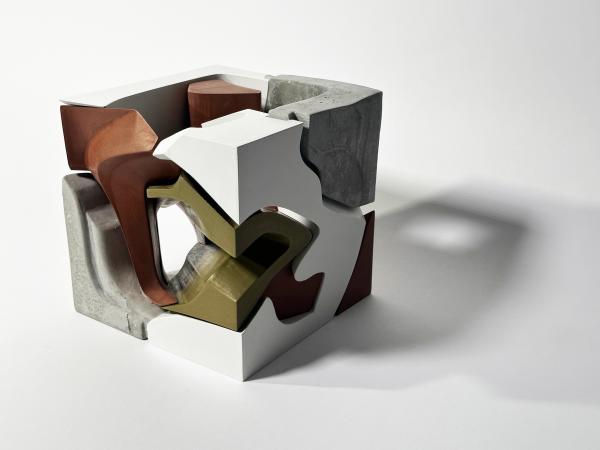
The long tradition of architecture studios involves the visual communication of three-dimensional ideas on a two-dimensional plane. Plans, sections, elevations, diagrams, and realistic perspectives render the ideas behind a project and are supported by scale models that provide a glimpse of the proposed building. Typically, the models begin at a low resolution of detail and gain a curated level of sophistication as the studio progresses.
For Dwayne Oyler and Jenny Wu—Principals of Oyler Wu Collaborative and our Spring 2023 Ruth Carter Stevenson Regents Chair(s) in the Art of Architecture—the models are the entire design process. Models are not just representations of a project; they are the central artifacts that embody the conceptual and material framework of the studio from end to end.
This methodology (of foregrounding the model as the main character, and drawings as a supporting cast) took center stage in “Puzzling Forms of Assembly,” an Advanced Design Studio taught by Jenny Wu, Dwayne Oyler, and School of Architecture Lecturer Paul Germaine McCoy.
As the title suggests, the studio was particularly interested in investigating buildings as an assembly of parts. From the scale of a handrail to the building’s massing or the programmatic elements joined together in a space, the studio sought to articulate methods of assembly that allow for transference between types and scales. To explore these ideas, students began the semester by designing a series of three-dimensional puzzles that required the complex assembly of multiple parts and pieces. The intention was to move between scales of thinking that upset the typical ways of moving from large to small (or small to large, for that matter).
Reflecting on the studio, McCoy notes: For Jenny and Dwayne, “the model offers a polemic argument about the assembly of a building over time, and the drawings facilitate the clarity of the steps taken to assemble the project. The studio departs from the traditional process because there is a larger ambition behind how they believe space should be assembled. There is both a practical and conceptual knowledge in the friction between pieces, the clicks at the end, and the slides between the details of a model that inform the creation of architecture beyond a diagram, a layout, or perspective.”
In building their 3D puzzles, students engaged a range of emerging technologies, including artificial intelligence platforms and 3D printing. For Master of Architecture student Julia Nahley, this was the highlight of the semester: “The most surprising and rewarding aspect of the studio for me was learning new forms of craft,” she said. “Integrating AI and 3D printing into our model-making was a highlight and a major focus of our work throughout the semester—challenging traditional modes of problem-solving and encouraging skills to help us better express design solutions.”
As the studio progressed, assignments shifted from the relatively abstract 3D puzzles to a more focused look at their site and final project, a re-design of the Joshua Tree Visitor Center, using the concepts and techniques of the studio. Over Spring Break, the studio visited Joshua Tree to understand the unique site conditions and the environmental and cultural value of the park. While there, they also explored Los Angeles and visited the offices of Dwayne and Jenny’s practice, Oyler Wu Collaborative. For a complete look at what they got up to in Los Angeles, check out Julia’s Instagram takeover recapping the trip.
For Bachelor of Architecture student Marshall Morgan, “the most rewarding part of the studio was the unique blend of hands-on experience and professional insight it offered,” he notes. “As practicing architects, Jenny and Dwayne brought a real-world perspective, and their visits and the immersive spring break trip allowed us to witness architecture in action and to explore Los Angeles’ unique design culture. Their guidance challenged us to see the design process from a different perspective, from conceptualization to execution. This studio experience not only expanded my knowledge on the importance of model making but also ignited a passion for finding unique methods of design thinking."
